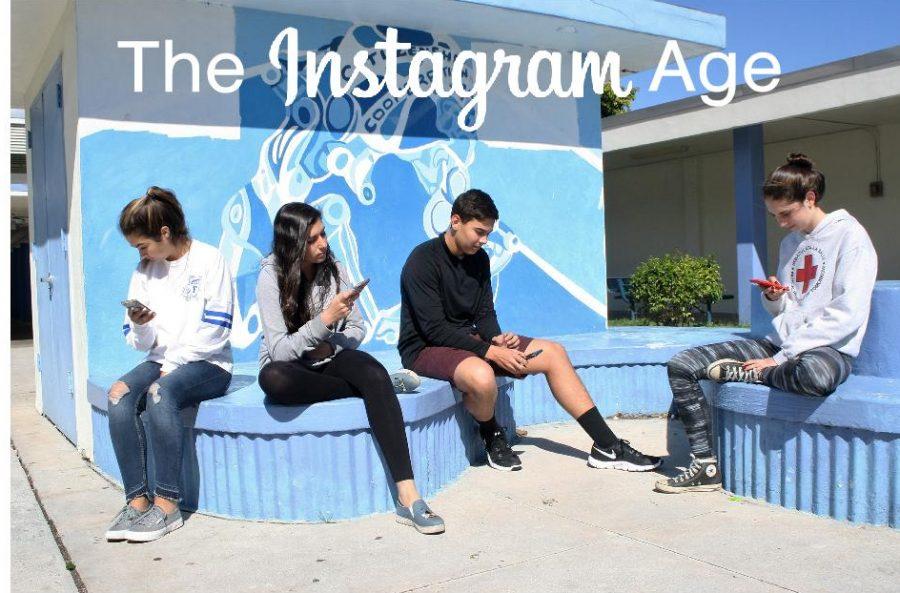The Instagram Age
February 2, 2017
There are 600 million monthly active users on Instagram as of December of 2016, and over 90% of users aging under 35. The social media platform that swept our generation has taken over their lives without even noticing.
The Pew Research center surveyed 3,000 people and 88% of their participants agreed that it is “generally” unacceptable to go on your phone during a dinner; however, 89% of the people interviewed admitted to using their phone in the latest social gathering they had attended.
“I find myself on my phone a lot of the time at social events and to be honest, I think I would be happier if I was not on my phone as much.”, senior, Sarah Berlan said.
It is a rare occasion to walk in a room and see not one person on their phone. The American Psychological Association said the first phase of addiction begins with dependence, prevails over their entire life.. Addiction does not apply to drugs and alcohol alone, addiction comes in all forms. The Instagram age of our generation is an addiction.
“I would definitely say I am addicted to my phone, I find myself on my phone wasting time way too much”, Berlan said.
This addiction can be explained through science. In Simon Sinek’s speech on “Millennials in the Workplace”, he points out that when we immerse in social media, a chemical named dopamine is released. This is the exact chemical that produces the temporary satisfactory feeling when people smoke, drink, or gamble. This alsoclarifies the origin of why people are constantly returning to social media, especially when they are stressed. In 2012, a researcher at Harvard University noted that discussing about oneself through social media triggers a blissful emotion in the brain.
“I do not use that much social media besides Instagram; however, it does relax me and makes me feel updated on people’s lives”, Berlan added.
Even though the social media mania has prevailed over the majority of most people’s lives, there are some people who are not active at all on social media websites and they have prospered as a result.
“I’m just not really into social media, I feel like if I did get it I would just waste a lot of time on them”, sophomore Jake Williams said. Williams is not involved in social media and plans on keeping it that way.
A study in 2010 done by Paul A. Kirschner and Aryn C. Karpinski noted that students who are not on social media are more inclined to have superior grades. Student who were regularly engaged in social media had an average GPA of 3.06 and students who were not engaged had an average GPA of 3.82. Also, students who utilize social media during their study time scored 20% lower on tests.
“I gave up social media for about a month because I was going through a rough time and my grades were suffering, and it was a great decision, my grades improved and it really helped me disconnect from the extra stress that social media typically imposes. I definitely recommend if anyone is considering doing it, do it.”, sophomore Vanessa Garcia said.
Urs Gasser and John Palfrey, professors from Harvard law school, noted in their study that after checking notifications, the average amount of time it takes to go back to the initial undertaking is about 20 to 25 minutes. For 30% of those situations, it will take up to two hours to actually go back to the original activity. Checking one’s social media notifications is an unhealthy addiction that affects countless people.
“It feels really good not having to constantly check instagram or snapchat every five minutes and lower my unnecessary stress a lot.”, Vanessa Garcia said.
The Pew Research Center noted that 92% of teens go online daily. Millennials are suffering from an addiction that they do not even recognize is present and ravaging their lives. A lot will need to be done in order to fix this extensive obstacle that “the Instagram age” has endured.

